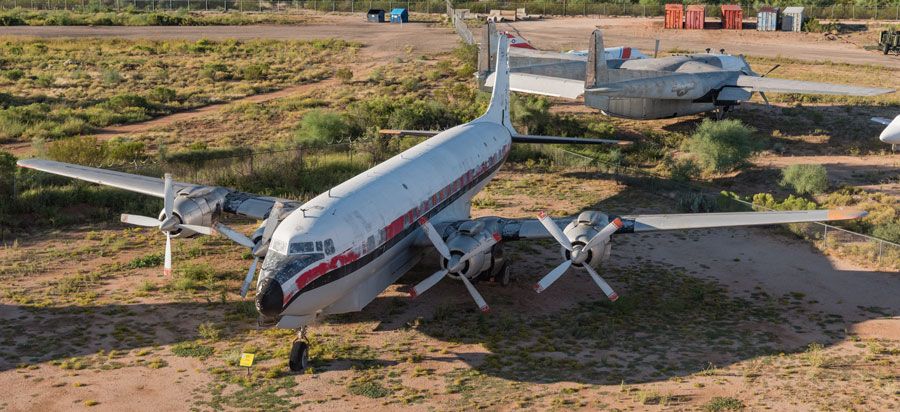Douglas DC-7B
Developed at the request of American Airlines the DC-7 was designed to be capable of non-stop transcontinental flights in competition to the Lockheed Super Constellation in use by TWA. The new airliner first flew in May 1953 and entered service with American Airlines in November of that year. The DC-7B is virtually identical to the earlier version of the plane apart from larger engine nacelles designed to hold more fuel. The DC-7 was the last of Douglas’s piston engine airliner designs that had begun with the DC-2 in the 1930s. Many DC-7s found use after the airlines with travel clubs and as fire fighting aircraft.
Wingspan | 117 ft 6 in. |
Length | 108 ft 11 in. |
Height | 28 ft 7 in. |
Weight | 126,000 lbs (loaded) |
Maximum Speed | 360 MPH |
Service Ceiling | 27,900 ft |
Range | 4,920 miles |
Engines | Four Wright R-3350-18DA-4 radials with 3,250 horsepower each |
Crew | 3 pilots, 2 flight attendants, and 64 to 95 passengers |
Manufacturer
Douglas
Markings
T&G Aviation Inc. Chandler, Arizona, 1985
Designation
DC-7B
Registration
N51701
Serial Number
44701
